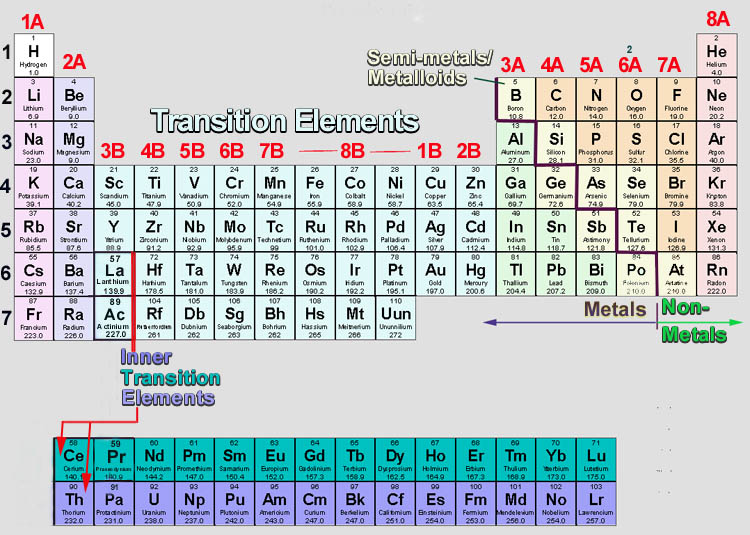
|
 |

|

|
|

|
|
Thank Yous
(coming Soon!)
|
|
#2 Everything you wanted to know about the periodic tableEvery chemist and chemistry student has seen the periodic table of the elements below:

The letters are the symbol of the element (Hydrogen is "H", Oxygen is "O"). These symbols are used everywhere. Some are obvious to the element ("H" is Hydrogen, "S" is Sulfur, "Ca" is Calcium), yet some aren�t so obvious ("Fe" is Iron, "Pb" is Lead "Na" is Sodium). In Chemistry, the symbols must have the same capitalization, usually first letter is capital, then second(if any) is lower case.(Sodium is Na, not na, NA, or nA; Chlorine is Cl, not CL, cl, or cL) The number in each square is called the atomic number, it basically says how many protons are in the nucleus for these elements. (Hydrogen (H) has one, Oxygen (O) has 8, Sodium (Na) has11). The larger number on the bottom is called the atomic mass. It is basically the number of protons and neutrons (average) for all the atoms of that element. (for example Oxygen�s atomic number is 16.00 because most Oxygen atoms have 8 protons and 8 neutrons.(We�ll get into it during the next lesson) It is used in stoichiometry which you will learn There are some notable things that should be known about the periodic table:
For more info on the periodic table, including interesting facts on each element go to one of these links:
|